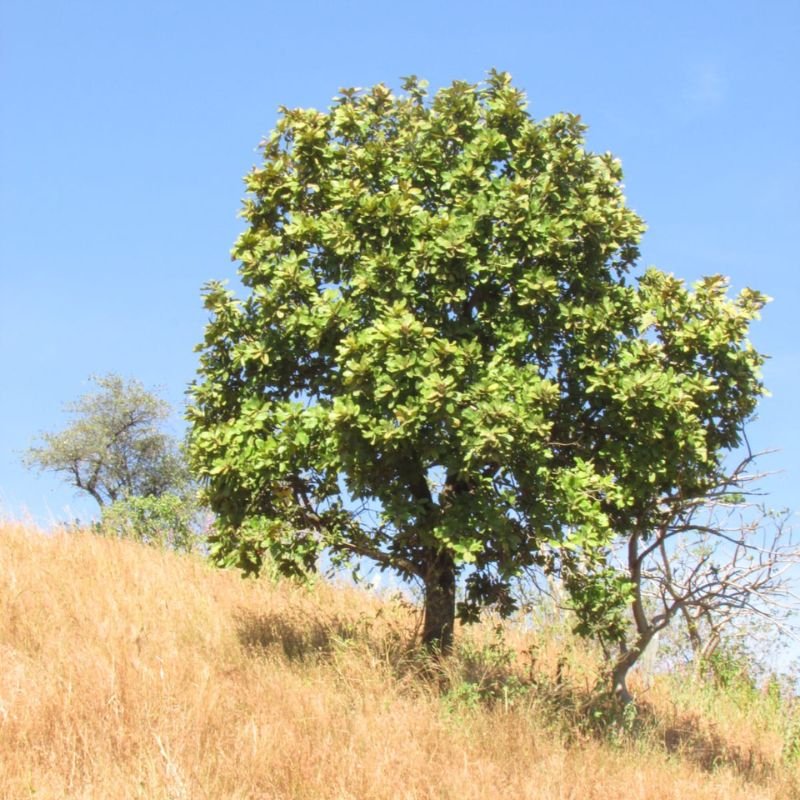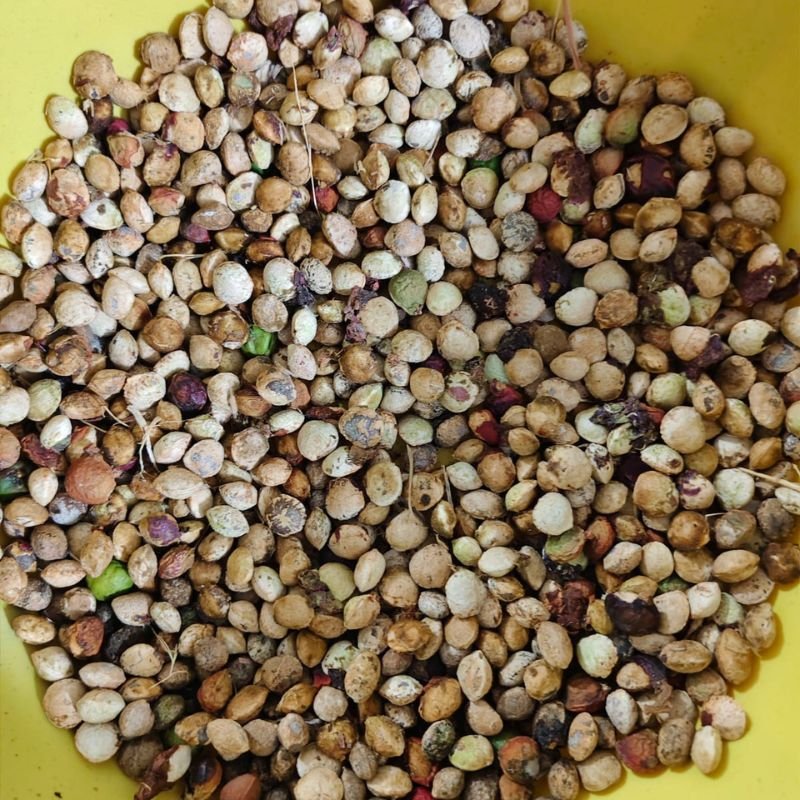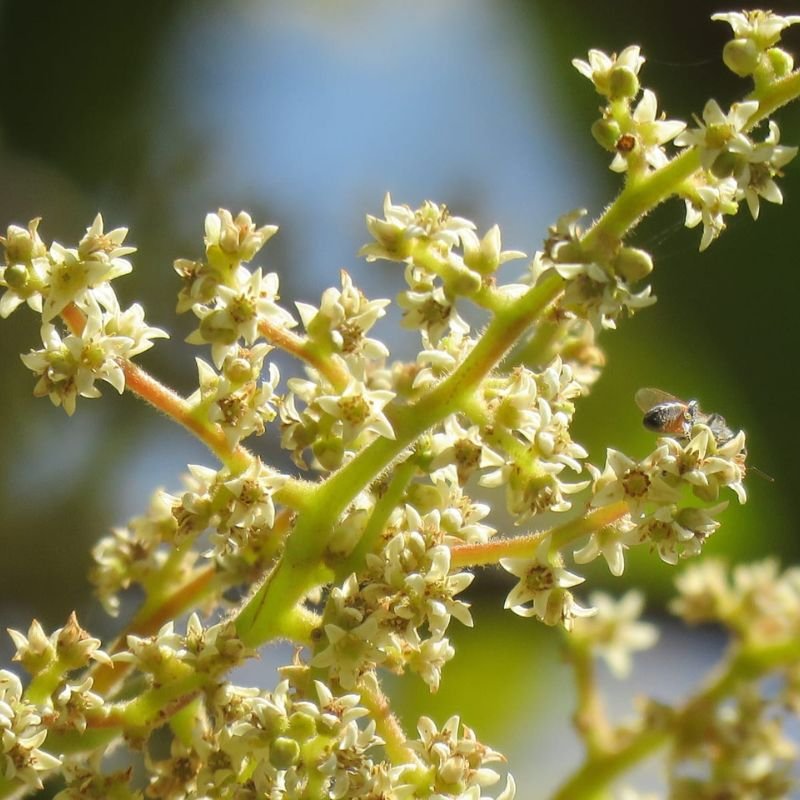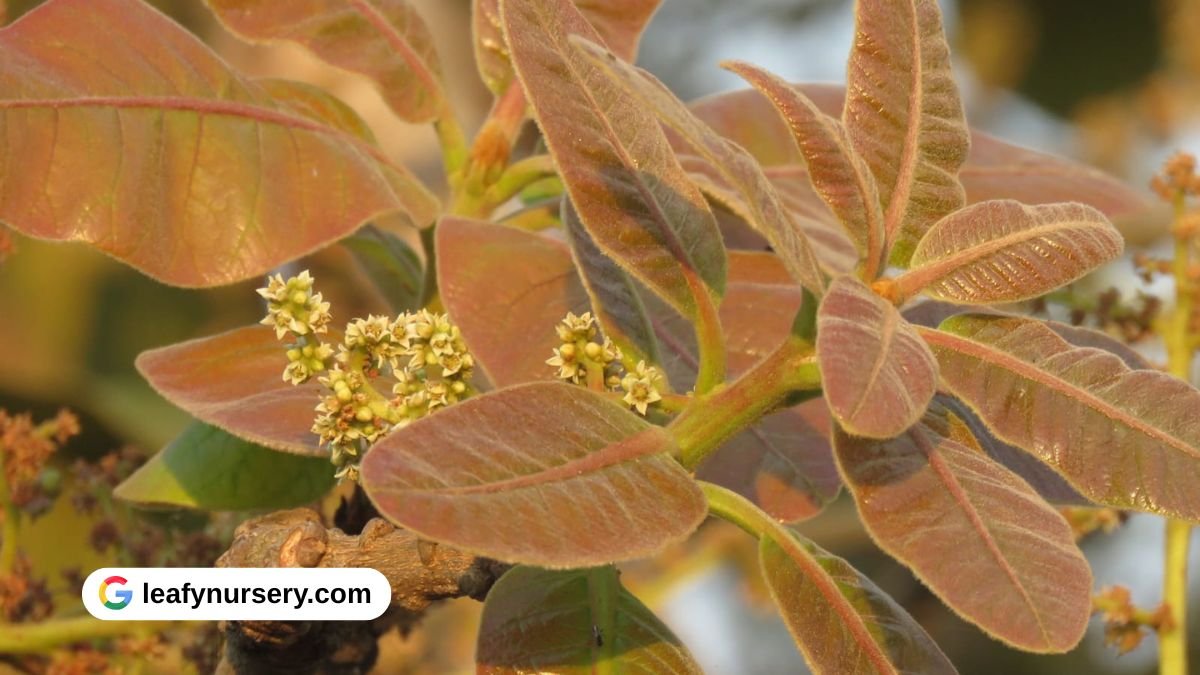The Charoli tree, scientifically known as Buchanania lanzan, is a valuable medicinal and culinary tree native to India. Often called the wild almond or “Chironji,” this tree is mainly found in tropical forests and dry regions, especially in Maharashtra, Madhya Pradesh, and Chhattisgarh.
Historically, the Charoli tree in India has been used in Ayurveda for centuries due to its numerous healing properties. Its small seeds are a delicacy in Indian cuisine and are also packed with nutrients. Interestingly, these seeds are often mistaken for almonds but have a distinct nutty flavor.
The tree is deeply rooted in tribal traditions and is a source of income for many forest-dependent communities.

Plant Specifications of the Charoli Tree
- Botanical Name: Buchanania lanzan
- Common Names: Charoli, Chironji, Priyal
- Tree Height: Grows up to 15-20 meters
- Growth Rate: Moderate to slow
- Flowering Season: February to April
- Fruiting Season: May to June
- Leaves: Broad, oval-shaped, and leathery in texture
- Charoli Tree Habitat: Dry deciduous forests and rocky areas
Types of Trees: Charoli Tree Varieties
Though Buchanania lanzan is the main species known as the Charoli tree, there are slight variations based on regional climates and soil. However, no major subspecies are commercially recognized. Variations in seed quality and fruiting time may occur in trees grown in different Indian states like Maharashtra, Odisha, and Jharkhand.

How to Plant and Care for a Charoli Tree
How to Grow Charoli Tree? Growing a Charoli tree requires patience, but the results are rewarding.
Step-by-Step Guide:
- Choose a location with full sunlight and well-drained soil.
- Soil Type: Prefers loamy or slightly rocky soils.
- Planting Method: Use fresh seeds or nursery saplings. Dig a hole 2x the size of the root ball.
- Watering: Water deeply once or twice a week, especially during the initial growth phase.
- Sunlight: Full sun exposure (6-8 hours daily).
- Fertilization: Use organic compost once in 3 months.
- Pruning Tips: Prune lightly to remove dead or weak branches after the fruiting season.

Benefits and Uses of the Charoli Tree
Medicinal Benefits:
- Charoli Ayurvedic properties: Used to improve digestion, vitality, and respiratory health.
- Charoli for skin and health: Charoli seeds are believed to promote glowing skin and are used in Ayurvedic face packs.
- Charoli medicinal uses: Treats ulcers, fevers, and as a general tonic.
Nutritional Value:
- Charoli seeds nutrition facts: Rich in protein, healthy fats, vitamin C, iron, and calcium.
Culinary Uses:
- Charoli seeds in Indian cuisine: Commonly used in sweets like kheer, halwa, and festive dishes. The seeds are roasted and ground into spice pastes or garnishes.
Environmental Benefits:
- Improves soil fertility
- Helps in controlling erosion
- Provides habitat for birds and small animals
Best Placement for the Charoli Tree
You can plant the Charoli tree in gardens, roadways, farms, and public parks. It’s also suitable for large home gardens and agroforestry plantations in Maharashtra and other semi-arid regions.
Avoid waterlogged areas, as the roots prefer dry to moderate moisture conditions.
FAQs about the Charoli Tree
Q1.What is the Charoli tree used for?
Charoli trees are used for their nutritious seeds, Ayurvedic benefits, and wood.
Q2. Is Charoli good for health?
Yes, Charoli is rich in protein, antioxidants, and healthy fats
Q3. How long does it take for a Charoli tree to bear fruit?
It typically starts fruiting after 5-7 years.
Q4. Can I grow a Charoli tree at home?
Yes, if you have enough outdoor space with good sunlight
Is Charoli the same as an almond?
No. While similar in taste, Charoli is smaller and has different nutritional properties
Trivia / Quiz: Charoli Tree
- What is the scientific name of the Charoli tree?
- a) Azadirachta indica
- b) Buchanania lanzan ✅
- c) Terminalia arjuna
- In which Indian state is Charoli most commonly found?
- a) Kerala
- b) Maharashtra ✅
- c) Punjab
- Which part of the Charoli tree is used in cooking?
- a) Leaves
- b) Seeds ✅
- c) Flowers
- Is Charoli used in Ayurveda?
- a) Yes ✅
- b) No
Final Thoughts
The Charoli tree is a hidden gem of Indian forests. With its medicinal, culinary, and environmental benefits, this tree deserves more recognition. Whether you’re an Ayurvedic enthusiast or a nature lover, planting a Charoli fruit tree is a step toward sustainability and wellness.



